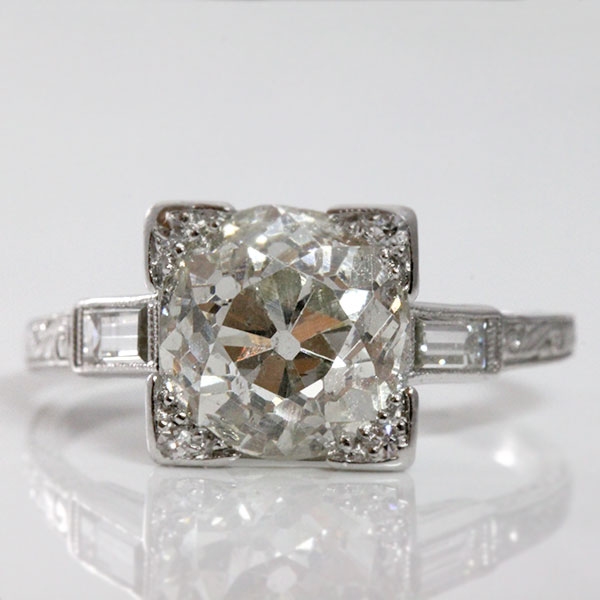
Everyone loves vintage jewelry, but when it comes to describing pieces, it’s difficult without knowing the right terms.
We covered the different eras of Antique, Vintage, and Estate jewelry in this blog.
Now we can look into different features of vintage jewelry as described by jewelry.about.com :
Camphor glass usually dates to the 1920’s and we see it rarely come through our office. These peices of frosted glass are usually in sterling silver filigree (we cover filigree below) and featuring a star burst pattern and diamond in the center.
Fine Cannetille is dated to the early 1800’s with pieces from the Art Deco period imitating but not quite as fine as filigree (intricate detailing). Gold was made into fine strings and used to create stunning detail.
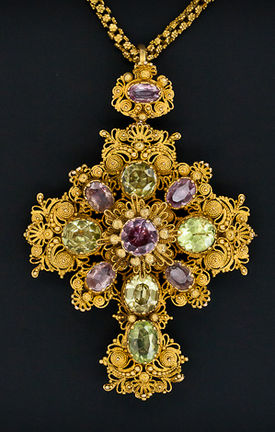
Chatelaine is a brooch from which decorative tools or charms hung. Useful items were kept close. Usually this is pinned to a lady’s dress. Items often attached were watches, perfume, sewing supplies, and magnifying glasses.
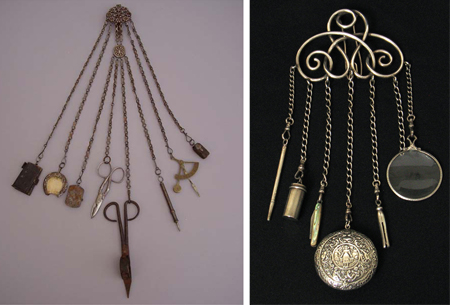
Enamel is applied to different metals and still used today. Intricate Enamel work adds color and detail to fine items.
Festoon necklaces feature different drops and chains. It creates varying lengths and continues to be popular today.
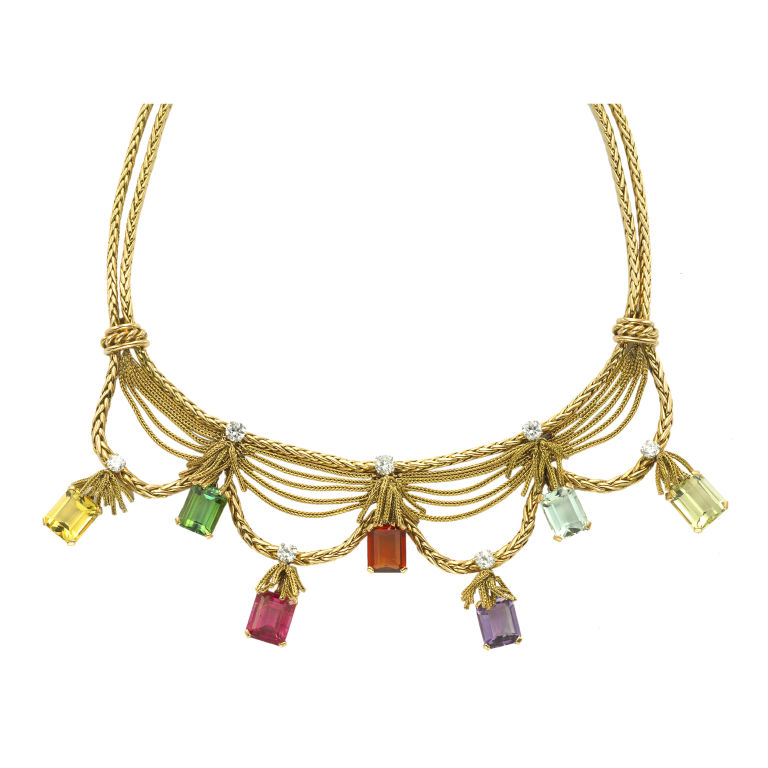
Filigree is a very intricate pattern created with thin pieces of metal. Often flowery and light it creates a beautiful fine look.
Gold filled jewelry or ‘rolled gold’ is heating a sheet of gold to a base metal such as brass.
Lavaliere is a single drop off a chain usually with a pearl drop at bottom. Named for a mistress of Louis XIV, the necklace is usually long and delicate.
Old European Cut is a diamond cut used between the 1890’s and 1920’s and often seen in vintage diamond jewelry. It features smaller tables and deeper pavilions than modern diamonds.
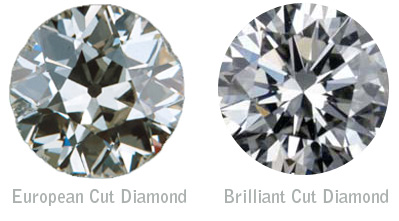
Plique-a-Jour is an enamel work that is transparent and often in the motifs of nature, leaves, wings, flowers etc. French for “Open to light” it creates a mosaic/ stained glass effect in miniature.
Read the full article on http://jewelry.about.com
